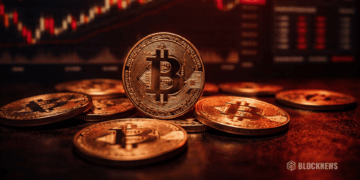- US Representative Maxine Waters has called for a review of the Market Structure Bill by the SEC and the Treasury, expressing concerns about its effectiveness.
- The proposed legislative framework for digital asset regulation would allow crypto exchanges to register with the SEC and CFTC for comprehensive trading.
- The proposal is still a “discussion draft,” expected to undergo several rounds of amendments and discussions before becoming law.
Congress has witnessed a significant step towards providing a definitive legislative framework for digital asset regulation. Patrick McHenry, Chairman of the House Financial Services Committee, and Glenn Thompson, Chairman of the House Committee on Agriculture, recently released a draft proposal intended to clarify rules, fill regulatory gaps, foster innovation, and ensure adequate consumer protection in the rapidly growing digital asset ecosystem. While this initiative has generated a significant buzz within the cryptocurrency community and financial regulatory bodies, not all lawmakers are in agreement about the bill’s potential impacts and regulatory approaches.
McHenry-Thompson Proposal: A Game-Changer for Digital Assets?
At the heart of the McHenry-Thompson draft proposal lies an attempt to strike a delicate balance. The bill seeks to reconcile the need for regulatory oversight with the desire to encourage responsible innovation in the digital asset sector. One of the key aspects of the proposal involves potentially allowing crypto exchanges to register with the Securities and Exchange Commission (SEC), thereby enabling them to trade digital securities, commodities, and stablecoins all under one roof.
Further, the proposed legislation introduces the idea of an “Alternative Trading System (ATS)” for SEC-registered crypto exchanges. Under this new designation, platforms could facilitate all of a crypto investor’s transactions in one place, as long as they also register with the U.S. Commodity Futures Trading Commission (CFTC).
Maxine Waters’ Concerns and Request for SEC and Treasury Review
Despite the positive developments, the draft proposal has also drawn criticism and scrutiny. US Representative Maxine Waters has called for a careful examination of the bill. She penned a letter to the SEC and the US Treasury Department, requesting a thorough review of the Market Structure Bill. Waters has requested the agencies to consider the potential impact of the bill and gauge how it could alter the role of the SEC and Treasury, particularly in the context of investor protection.
Waters’ concerns reflect the broader ongoing debates within Congress on the nature of digital asset regulation and its implications for the financial sector and the public. As she awaits responses from the SEC and Treasury, her actions underscore the importance of ensuring that the new regulatory framework does not inadvertently expose investors to unnecessary risk or undermine the authority of existing regulatory bodies.
What’s Next for Digital Asset Regulation?
Although the draft proposal represents a significant step towards establishing a concrete regulatory landscape for digital assets, the path towards full legislative consensus remains fraught with challenges. The proposal is a “discussion draft,” a starting point to incite conversation and negotiation among lawmakers and regulatory bodies. As Congress grapples with these complexities, the draft proposal stands to be subjected to numerous rounds of feedback, amendments, and discussions before it becomes law.
Furthermore, there are ongoing discussions about how to handle specific types of digital assets, such as stablecoins, which are typically dollar-pegged tokens that U.S. regulators believe could pose wider financial stability concerns. These discussions highlight the need for a multi-faceted and nuanced approach to digital asset regulation.














